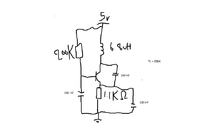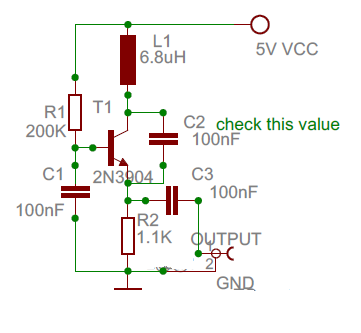Kz9
Newbie level 6
Hello everyone,
I am trying to desgin RF oscillator.
I have 3904 transistors & 6.8uH inductors & lots of resistors & 100nF capacitors.
I tried to desgin it on Multism , it worked, I get sine wave oscillations.
however, when i try to do the real thing, it doesn't oscillate.
i'll attach sketch desgin of the circuit.
Any suggestions, and explanton how it works please!
P.S: It's Colpitts oscillator desgin
Thanks in advance!
Kz9

I am trying to desgin RF oscillator.
I have 3904 transistors & 6.8uH inductors & lots of resistors & 100nF capacitors.
I tried to desgin it on Multism , it worked, I get sine wave oscillations.
however, when i try to do the real thing, it doesn't oscillate.
i'll attach sketch desgin of the circuit.
Any suggestions, and explanton how it works please!
P.S: It's Colpitts oscillator desgin
Thanks in advance!
Kz9

